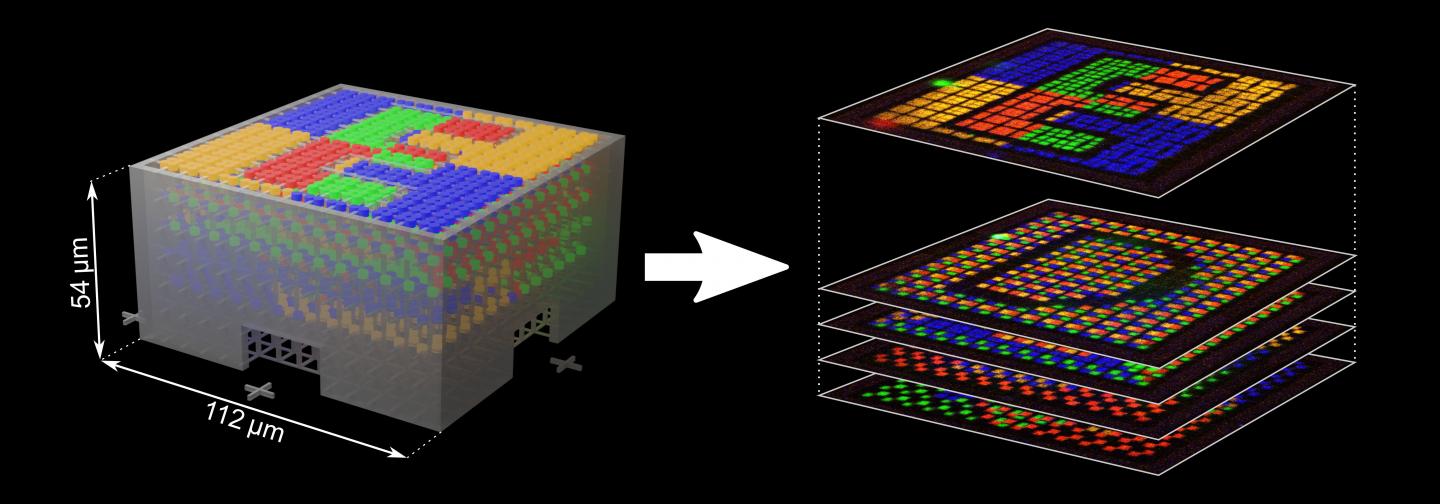
Three-dimensional (3D) structures on the micrometer and nanometer scales have great potential for many applications. Now, in a paper in Science Advances, researchers from Germany and Australia report an efficient and precise process for printing such structures from different materials. They have used this process to produce multi-colored, fluorescent security features to protect banknotes, documents and branded products against counterfeiting.
Printed 3D micro- and nanostructures have a wide range of applications, including as components for data processing with light, optical microlenses, mechanical metamaterials, artificial scaffolds for cell cultures, and security features for banknotes and branded products. A 3D printing process known as laser lithography has become an established, reliable and versatile process for producing these structures.
Laser lithography works by shining a laser beam onto a liquid photoresist in a computer-controlled pattern, causing the photoresist to harden at the focal point of the laser beam. This gives rise to highly precise filigree structures for many applications, including optics and photonics, material sciences, biotechnology and security technology.
Nearly all of the micro- and nanostructures produced by 3D laser lithography so far have been made from a single material. But they can also be manufactured from several materials by successive application and hardening of different photoresists, with the unexposed resist being washed out in a subsequent developing bath. Such a process is, however, very time-consuming and complicated, and its precision decreases with increasing numbers of materials and repetitions.
Researchers at Karlsruhe Institute of Technology (KIT) in Germany and Queensland University of Technology (QUT) in Australia, together with researchers at Carl Zeiss AG, have now developed a new system for the efficient and precise production of printed micro- and nanostructures from several materials. They did this by integrating a microfluidic chamber for the fluids directly into a 3D laser lithography device.
The researchers used this integrated system to produce 3D microstructured security features from seven different fluids: a non-fluorescent photoresist as backbone, two photoresists with different fluorescent quantum points, two photoresists with different fluorescent dyes and two developer fluids. Such security features, which consist of a 3D lattice enclosed by retaining walls and fluorescent markers in different colors, may protect banknotes, documents and branded products against counterfeiting.
For their system, the researchers used a 3D laser lithography device developed and commercialized by Nanoscribe GmbH, a spinoff from KIT, and integrated it with a specially-made microfluidic chamber. The chamber is connected to an electronic pressure control, up to 10 containers for the different photoresists and developers, and a star-shaped selection valve. The selected fluid is passed to a specimen holder via an overpressure valve, before flowing into a waste container.
"All steps for producing three-dimensional micro- and nanostructures from several materials can be integrated into one system," says Martin Wegener, who heads the working group at KIT’s Institute of Applied Physics. "This system paves the way towards multi-material additive manufacture on the micro- and nanoscale."
This story is adapted from material from Karlsruhe Institute of Technology, with editorial changes made by Materials Today. The views expressed in this article do not necessarily represent those of Elsevier. Link to original source.




